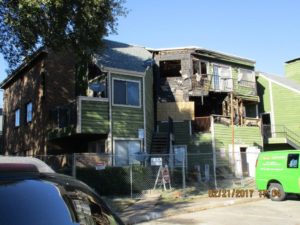 We have faced our fair share of natural disasters in Houston over the past few years. Being prepared for hurricanes and floods is something that we know how to do. But bouncing back, especially after Harvey, isn’t always so easy. Fingers crossed, hurricane season for our area is coming to an end. But that means that fire season is quickly approaching. The fact is, disasters can happen at any time, and this is why it’s so important to make sure your business is prepared to face disasters of all kinds, and know what to do immediately after one strikes.
We have faced our fair share of natural disasters in Houston over the past few years. Being prepared for hurricanes and floods is something that we know how to do. But bouncing back, especially after Harvey, isn’t always so easy. Fingers crossed, hurricane season for our area is coming to an end. But that means that fire season is quickly approaching. The fact is, disasters can happen at any time, and this is why it’s so important to make sure your business is prepared to face disasters of all kinds, and know what to do immediately after one strikes.
Before we move forward, we want to address fire season. Fire season starts in Houston around late November, early December and ends around March. Our area experiences an influx of fires because it’s the first time the heater is turned on in many months, which can cause a lot of problems. Also, there is excess lighting outside and inside homes and offices because of the holidays, and this is a huge fire hazard.
Being prepared for a disaster is just as important as the steps you take once it hits. We discussed the preparation process in a previous blog post that can be found here. But what you do after the disaster is crucial to the amount of time it will take to get your business up and running again.
As a catastrophic restoration services company, we have seen disasters of all kinds and helped businesses quickly bounce back for over 30 years. Based on our experience, if one hits your place of business, we suggest doing the following:
Make sure all employees are safe. If the disaster is a hurricane or a tropical storm, typically there will be enough warning to get all employees to safety. However, if you’re dealing with a fire it’s important to make sure all employees are accounted for. Have a meeting place that all employees go to that’s outside of the building and far enough away from the danger zone. This will allow you to get an accurate headcount of all employees, which is your number one priority.
Have a disaster contact call list on hand. This list should be somewhere that you can easily access and should contain the following:
- First responders
- Local hospitals
- Insurance providers
- Key employees/managers
- Emergency response vendors
Who you call depends on the type of damage that occurred. If everybody was able to make it out safely, then you can start thinking about securing your business.
Contact your emergency response partner. If you do not already have a relationship with an emergency response company, we suggest you get in touch with one immediately. We work with businesses all over the area to have a plan of action in place in case something happens to their company. For example, if there is a fire, we will activate our previously agreed-upon response plan and immediately start boarding up your facility. Having a relationship with a disaster relief company and a plan in place makes the recovery process a lot smoother.
Contact your insurance company. According to Forbes, quickly communicating your loss to your insurance company is essential to getting your claim paid properly. If you delay filing, your settlement could be reduced or even denied. To avoid potential questions about your claim, inform your insurer and/or broker about the loss as soon as possible—with as much detail as possible, including (but not limited to):
- What was damaged, including the cause or suspected cause
- The day and time it occurred
- Who will be the primary contact person
- Notification about your plans to secure the area
Unfortunately, disasters can strike any time. But following the steps listed above can make all the difference. If you do not already have a plan in place with a disaster relief company, we can help. We would love to sit down with you, and together, create a disaster response plan that is specific to your company.
